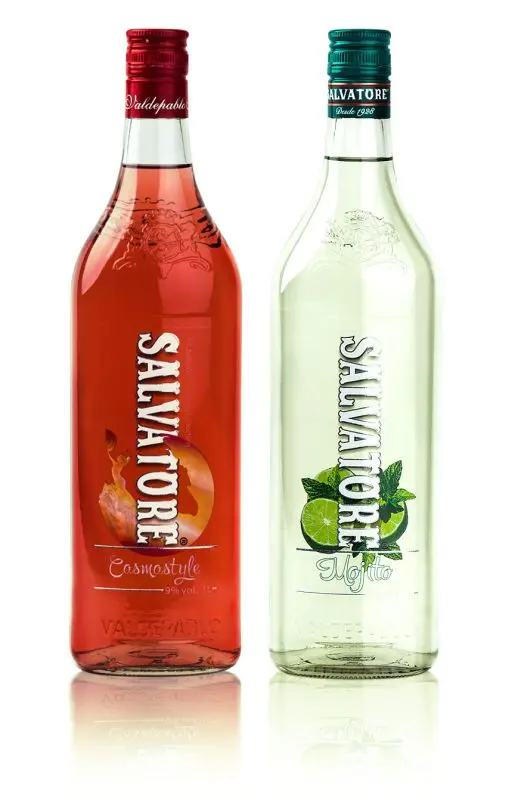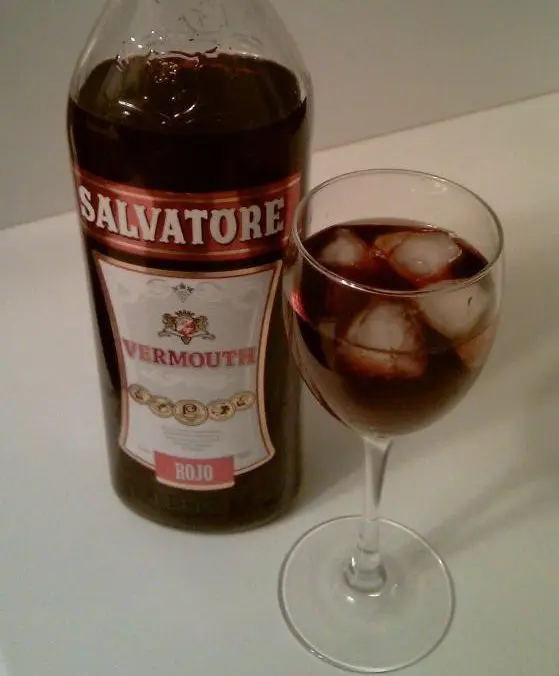Contents
Producer of vermouth Salvatore – the company Bodegas Valdepablo-Neva – is the Russian representative office of the Spanish winery. Bodegas Valdepablo’s head office was founded in Calatayud in 1928, with a branch in Russia opened in 1995.
The company specializes in dessert alcohol: the product line includes vermouth (flavored sweet wines), sangria (a wine-based drink with fruits), mulled wines, and some “clean” wines.
Technology
Salvatore’s recipe is kept secret, but it is known that high-quality wine from Spanish, Chilean or Argentine grapes is taken as the basis, the drink contains 18-36 aromatic herbs (depending on the type).
Types of vermouth Salvatore
The strength of all Salvatore vermouths is 15% vol., the sugar content is 150 g / l (except for “Dry”, in which sugar is only 35 g / l).
- Dry. In the bouquet, the tones of herbs and flowers are felt.
- White. Classic sweet flavored wine, great for cocktails.
- Bitter. The bouquet is dominated by spicy notes of bitter herbs.
- Red. Based on red wine with essences of herbs and fruits.
- Pink. The newest product in the line, introduced to the market in 2004.

Salvatore cocktails
Vermouth Salvatore can replace the classic Martini or Cinzano in cocktail recipes, and since 1998 the manufacturer has been producing several already mixed and bottled cocktails. The strength of all variations is 9% vol., the sugar content is 90 g/l.
- Chocolate, chocolate flavor.
- Mojito, mint-lime flavor.
- Cosmostyle, cranberry and black currant tones prevail in the bouquet.
- Light, the newest member of the range, launched on the market in 2017. It has a light floral and herbal taste.

Comparison of Salvatore and Martini
Despite the fact that Martini has already become a household name, this is not a separate drink, but only one of the brands of vermouth, like Salvatore.
Both brands are sweeter than classic vermouth, which should be dominated by notes of wormwood and bitter herbs. Both Martini and Salvatore are soft, “delicate”, with almost no bitterness. They are also identical in strength.
At the same time, Martini is much more widely known on the world market, has a more balanced bouquet and costs twice as much as the “competitor” (in fact, only Cinzano can somehow compete with Martini). In addition, the volume of a bottle of Salvatore is a liter, not 0.75, which makes the price difference larger, and the purchase of Russian flavored wine is even more profitable.
How to drink Vermouth Salvatore
Like all vermouths, Salvatore improves appetite and speeds up digestion, so it can be served as an aperitif or digestif (before or after a meal). It is best to cool the drink to 7-9 degrees or throw an ice cube into the glass.

In its pure form, vermouth may seem too cloying, so it is not forbidden to dilute Salvatore to taste with juice, lemonade, soda or still water.
Vermouths are not usually eaten, but they go well with pasta, light snacks, lean fish, and white meat.
Salvatore is also included in cocktails:
- Club. Pour 1 part cognac into a glass with several ice cubes, add 2.5 parts of white vermouth and 3.5 parts of any citrus juice. Garnish with an olive and an orange slice.
- Delmonico. In an ice-filled shaker, mix 2 parts gin and XNUMX part red and dry vermouth, cognac. Pour into a glass, add two drops of angostura. Serve with an orange slice.
- Negroes. Pour 2 parts gin, 2 parts red vermouth, XNUMX part bitter into a chilled old fashioned glass. Serve with an orange slice.
- Bronx. In an ice-filled shaker, mix together one part red and dry vermouth, one and a half parts orange juice, 2 parts gin. Serve in a martini glass garnished with an orange slice.









